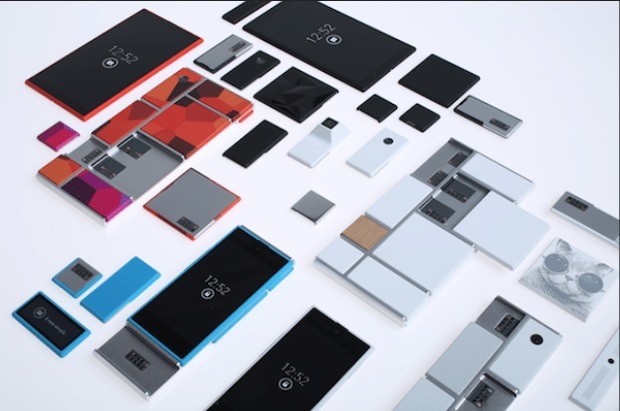1.Introduction: The Era of Innovation
Smartphone Privacy Enhancements : Welcome to the era of unprecedented technological breakthroughs, where innovation is reshaping every aspect of our lives. Among these advancements, one area stands out for its transformative potential: Smartphone Privacy Enhancements. In a world increasingly driven by personalization, smartphones are evolving beyond one-size-fits-all devices into versatile tools that adapt to individual lifestyles, preferences, and needs.
The significance of this topic lies in its ability to address modern challenges, including environmental sustainability, tech fatigue, and the growing demand for user-centric experiences. Smartphone Privacy Enhancements Privacy Enhancements empower users to take control of their devices, tailoring functionality, aesthetics, and performance to match their unique identities. These innovations not only enhance convenience but also open up new possibilities for creativity and practical solutions in everyday life.
In this blog, we’ll explore the exciting innovations driving this revolution, highlighting how modular hardware, adaptive software, and eco-friendly practices are paving the way for a smarter, more sustainable future. By the end, you’ll gain valuable insights into why Smartphone Privacy Enhancements are shaping the tech industry and how they could be the key to unlocking a more personalized digital experience.
Click Here: Protect Your Smartphone – Best Tips For 100% Security & Privacy
2. Understanding the Core Concept

The concept of Smartphone Privacy Enhancements designs revolves around empowering users to modify both hardware and software to create devices tailored to their unique needs and preferences. This approach challenges the traditional one-size-fits-all model, introducing modular features, adaptive software, and personalized aesthetics that redefine the smartphone experience. As the demand for personalization grows, Smartphone Privacy Enhancements offer a solution that aligns with modern users’ lifestyles and priorities.
The Focus: Redefining Personalization in Technology
Customizable smartphone designs enable users to:
- Tailor functionality by adding modular components, such as enhanced cameras or extended batteries, for specific tasks.
- Personalize aesthetics through interchangeable panels, color options, and materials that reflect individuality.
- Adapt software interfaces with themes, widgets, and AI-driven adjustments, ensuring that the device feels intuitive and personal.
This innovative approach is transforming smartphones into versatile tools that cater to specific needs, whether for productivity, entertainment, or eco-friendly practices.
Interesting Stats and Data Supporting Customization
- E-Waste Reduction: Modular smartphones, like those by Fairphone, can reduce e-waste by up to 30%, thanks to repairable and upgradable components.
- Demand for Personalization: A study by Deloitte found that 57% of global consumers prefer devices that allow for customization, indicating a clear shift in consumer preferences.
- Longer Lifespans: Research shows that modular designs can extend smartphone lifespans by an average of 2-3 years, promoting sustainability and cost efficiency.
यह भी पढ़े: “5 Innovative Ways Customizable Smartphone Designs Are Shaping the Future”
Why This Matters Today
As technology continues to evolve, users are seeking devices that adapt to their lifestyles and reduce the environmental impact of frequent upgrades. Smartphone Privacy Enhancements address these concerns by offering flexibility, reducing waste, and aligning with global trends like personalization and sustainability.
By embracing Smartphone Privacy Enhancements designs, the tech industry is not only improving user experience but also paving the way for a smarter, more sustainable future. Incorporating these innovations ensures that smartphones remain relevant, functional, and tailored to meet the ever-changing needs of users.
3. Benefits and Advantages

Smartphone Privacy Enhancements designs offer a host of advantages, making them a pivotal innovation for the modern user. By allowing personalization across hardware, software, and functionality, these devices cater to individual preferences while addressing common tech challenges. Here are the key benefits:
Specific Advantages of Customizable Smartphone Designs
- Personalized User Experience: Tailor hardware, software, and aesthetics to suit individual needs, creating a device that resonates with your lifestyle.
- Enhanced Functionality: Modular components, like swappable cameras or extended batteries, allow users to optimize their smartphones for specific tasks like gaming, photography, or work.
- Longer Device Lifespan: Upgradeable parts reduce the need for frequent replacements, saving costs and minimizing environmental impact.
- Eco-Friendly Innovation: Modular designs and recyclable materials contribute to sustainability by reducing e-waste and promoting greener technology.
- Cost Efficiency: Pay for only the features you need rather than buying multiple devices for different functions, ensuring value for money.
- Flexibility: Easily adapt your smartphone to changing needs or emerging technologies, ensuring it stays relevant for years to come.
- Unique Aesthetics: Customizable colors, panels, and materials allow users to showcase their individuality, making smartphones a reflection of personal style.
How It Addresses Reader Needs
- Problem: High costs and limited personalization options in traditional smartphones.
- Solution: Affordable and modular designs that allow users to personalize features and upgrade specific components, reducing overall expenses.
- Problem: Environmental concerns over electronic waste.
- Solution: Durable designs and recyclable materials that extend product life and reduce waste.
Smartphone Privacy Enhancements designs bridge the gap between personalization, practicality, and sustainability, delivering innovative solutions to common user concerns. They represent the future of technology, where versatility and individuality take center stage.
4. Industry Trends and Innovations

The Smartphone Privacy Enhancements industry is witnessing a wave of breakthrough innovations and trending technologies that are reshaping the way devices are designed and used. Smartphone Privacy Enhancements designs are at the forefront of this transformation, offering users unparalleled flexibility and personalization. Let’s explore the latest trends and real-world examples driving this revolution.
Trending Innovations in Customizable Smartphone Designs
- Modular Components: Modular smartphones, such as Fairphone, allow users to replace or upgrade individual parts like cameras, batteries, and displays. This trend promotes sustainability and extends device lifespans.
- AI-Powered Personalization: Artificial intelligence is enabling adaptive interfaces that learn user behavior and preferences. Features like predictive app suggestions and dynamic layouts are becoming standard.
- Eco-Friendly Materials: Brands are incorporating recyclable and biodegradable materials into smartphone designs, aligning with the growing demand for sustainable technology.
- Foldable and Expandable Displays: Foldable smartphones, like the Samsung Galaxy Z Fold series, are pushing the boundaries of screen technology, offering larger displays without compromising portability.
- Customizable Aesthetics: Interchangeable panels, color options, and material variations are empowering users to personalize the look and feel of their devices.
- Enhanced Security Features: Innovations like biometric authentication and on-device encryption are addressing privacy concerns, ensuring secure user experiences.
- Gaming and Productivity Enhancements: Modular attachments, such as cooling systems for gaming or detachable keyboards for productivity, are transforming smartphones into versatile tools.
Real-World Examples and Case Studies
- Fairphone: Known for its modular design, Fairphone allows users to repair and upgrade components, reducing e-waste and promoting sustainability.
- Phonebloks Concept: This innovative design introduced detachable “bloks” that users could replace or upgrade, showcasing the potential of modular smartphones.
- Samsung Galaxy Z Fold Series: Samsung’s foldable smartphones have set a benchmark for expandable displays, offering immersive experiences for multitasking and entertainment.
- Google Pixel Devices: Google’s integration of AI-driven personalization features, such as adaptive battery and predictive app usage, highlights the role of software customization.
Why These Trends Matter
These innovations are not just about aesthetics—they address critical challenges like sustainability, functionality, and user satisfaction. By embracing modularity, AI, and eco-friendly practices, Smartphone Privacy Enhancements designs are paving the way for a future where technology adapts to individual needs and global priorities.
5. Challenges and Solutions: Navigating the Path of Customizable Smartphone Designs

The rise of Smartphone Privacy Enhancements designs brings incredible benefits, but like any innovation, it also comes with its share of challenges. Addressing these hurdles is crucial to ensuring a smoother transition toward a more user-centric, sustainable future. Below, we’ll outline the key concerns in the industry and provide proven, actionable solutions to overcome them.
Common Challenges in the Industry
1.Complexity in Manufacturing: Producing modular Smartphone Privacy Enhancements requires intricate designs, advanced assembly techniques, and compatibility between components, which can increase costs.
2. Higher Initial Costs: Customizable smartphones often come with a higher upfront cost due to premium modular features and sustainable materials.
3. Limited Awareness: Many consumers remain unaware of the advantages of modular and customizable smartphones, leading to slower adoption.
4. Durability Concerns: The modular components and detachable parts may raise doubts about durability compared to traditional smartphones.
5. Software Integration: Customizing software interfaces and ensuring compatibility with third-party apps can be challenging, especially for modular operating systems.
Proven Solutions to Address These Challenges
1.Streamlined Manufacturing with Standardization
- Solution: Adopt effective standardization practices for modular components to simplify manufacturing and reduce costs. By creating universal modules, manufacturers can ensure cross-brand compatibility, leading to economies of scale and affordable pricing for users.
- Benefit: This makes customization accessible without compromising quality.
2. Cost-Efficient Models for Accessibility
- Solution: Introduce a tiered pricing approach, where users pay for only the features they need. For example, base models can be sold at affordable prices with optional modules available for purchase.
- Benefit: This ensures broader adoption by appealing to both budget-conscious and premium-seeking buyers.
3. Raising Awareness Through Effective Marketing
- Solution: Launch educational campaigns demonstrating the benefits of customizable smartphones, such as their sustainability and flexibility. Highlight real-life use cases and how they enhance user convenience.
- Benefit: Increases awareness and helps consumers make informed choices.
4. Enhanced Durability with Premium Materials
- Solution: Invest in high-strength materials like aerospace-grade aluminum or carbon fiber for modular components, ensuring durability without sacrificing modularity. Test products rigorously to build trust among consumers.
- Benefit: Addresses durability concerns and boosts confidence in modular designs.
5. Innovative Software Ecosystems
- Solution: Develop adaptive and AI-driven software ecosystems that seamlessly integrate modular hardware. This ensures that components work harmoniously with third-party apps and operating systems, enhancing user experience.
- Benefit: Simplifies software customization and ensures compatibility across platforms.
Why Addressing Challenges Matters
By effectively tackling these hurdles, the Smartphone Privacy Enhancements industry can unlock the full potential of customization. Smartphone Privacy Enhancements not only cater to individual preferences but also contribute to a more sustainable, flexible, and innovative tech ecosystem. Overcoming these challenges ensures that both consumers and the industry can reap the benefits of this exciting transformation.
6. Expert Tips and Insights: Making the Most of Customizable Smartphone Designs

Smartphone Privacy Enhancements are transforming the industry, offering users the freedom to tailor their devices to their unique needs and preferences. To make the most of this innovation, here are actionable tips and professional insights that can enhance your experience and help you choose the best options.
1.Choose Modular Features Based on Lifestyle
- Tip: Prioritize modular components that align with your daily activities. For instance, opt for camera upgrades if you’re a photography enthusiast, or extended batteries if you travel frequently.
- Insight: According to a report by IDC, 72% of users find modular designs useful for adapting smartphones to their professional and personal needs, reducing the necessity for multiple devices.
2. Invest in Durable and Sustainable Materials
- Tip: When customizing your smartphone’s hardware, consider eco-friendly options like recycled metals or biodegradable panels. These choices contribute to sustainability and improve device longevity.
- Insight: Experts at Green Electronics Council emphasize that choosing materials with lower environmental impact can reduce e-waste and promote ethical consumption.
3. Use AI-Driven Software Personalization
- Tip: Leverage AI-powered features to Smartphone Privacy Enhancements interface. Tools like adaptive layouts and predictive app suggestions can optimize workflows and enhance usability.
- Insight: AI-driven interfaces, as highlighted by industry professionals at Google, significantly improve user efficiency by adapting to individual habits and preferences.
4. Optimize Battery Life with Modular Upgrades
- Tip: If your smartphone supports modular batteries, invest in extended options that align with your usage patterns. Whether for gaming marathons or remote workdays, customizable battery modules ensure uninterrupted performance.
- Insight: Tech experts from Samsung note that modular battery upgrades can extend smartphone lifespans by reducing wear-and-tear on internal components.
5. Personalize Aesthetics for Unique Expression
Tip: Select interchangeable panels or customizable colors to match your style and personality. Look for brands offering exclusive designs and materials for added flair.
- Insight: Designers at Motorola suggest that personalized aesthetics not only enhance user satisfaction but also create a deeper emotional connection to the device.
6. Evaluate Compatibility and Scalability
- Tip: Ensure modular components are compatible with future upgrades and new technologies. Check brand ecosystems for scalability options that allow seamless integration of emerging features.
- Insight: Experts at Fairphone recommend choosing brands that prioritize component compatibility to minimize upgrade challenges and maximize device lifespan.
7. Explore Trusted Brands Offering Customization
- Tip: Research brands like Fairphone, Samsung, and Motorola for innovative customizable designs. Read reviews and user experiences to make informed choices.
- Insight: Industry analysts from TechRadar highlight that investing in trusted brands guarantees quality and reliability for modular and customizable smartphones.
By following these proven tips, you can fully harness the potential of Smartphone Privacy Enhancements. Whether you’re prioritizing functionality, style, or sustainability, these insights from professionals ensure that your choices align with your needs and future-proof your device.
7. Conclusion: Key Takeaways and Call to Action
Smartphone Privacy Enhancements designs are at the forefront of innovation, redefining how we interact with technology. This blog explored the transformative potential of these designs, highlighting their ability to combine personalization, functionality, and sustainability. From modular hardware to AI-driven software, customization empowers users to tailor their devices to their unique lifestyles, ensuring relevance and practicality in a rapidly evolving world.
Key Takeaways
- Personalization is Key: Customizable smartphones enable users to create devices that align with their preferences, whether through hardware upgrades, software tweaks, or unique aesthetics.
- Sustainability Matters: Modular components and recyclable materials address environmental concerns, reducing e-waste and promoting longer device lifespans.
- Future-Proof Technology: The flexibility of customizable designs allows smartphones to adapt to evolving needs and trends, making them a smart, long-term investment.
By embracing this innovation, users can benefit from enhanced usability, cost efficiency, and eco-friendly practices—factors that are becoming Smartphone Privacy Enhancements increasingly crucial in today’s tech landscape.
Call to Action
If you’re intrigued by the possibilities of Smartphone Privacy Enhancements designs, now is the time to explore these options. Research trusted brands, experiment with modular features, and see how personalization can enhance your digital experience. Share this blog with friends or family who might find these insights valuable and inspire others to embrace this exciting trend in technology.
The future of smartphones is here, offering a perfect blend of innovation, sustainability, and individuality. Make the leap into Smartphone Privacy Enhancements and discover how it can elevate your connection to technology.

